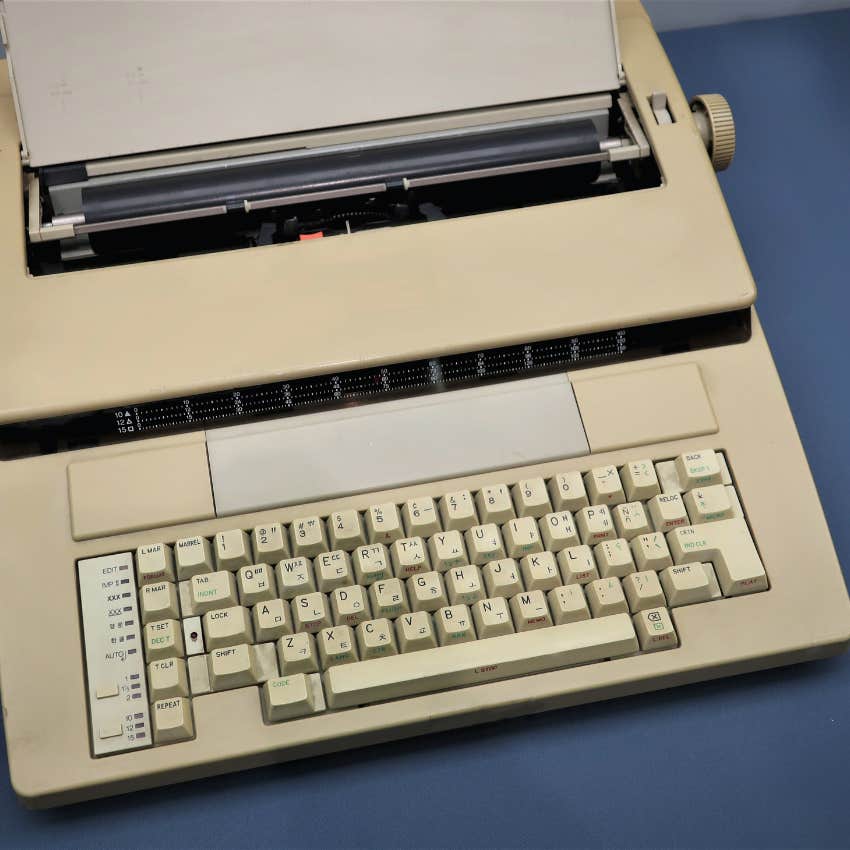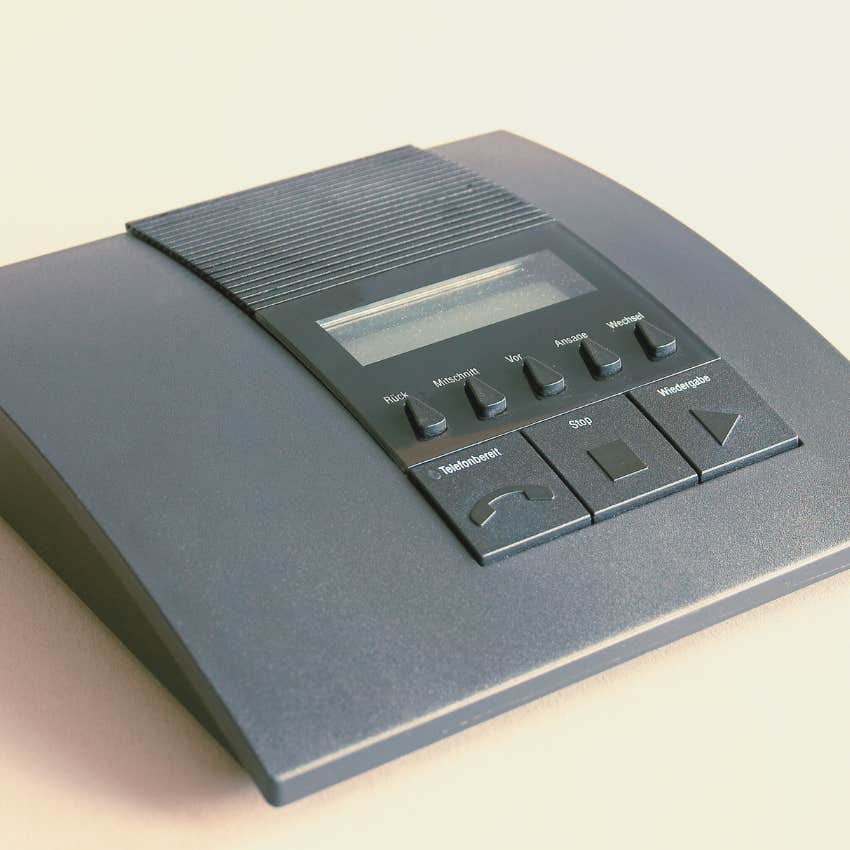12 Devices Gen X Thought Were Totally Rad But Gen Z Would Have No Idea How To Use
Gen Z may have some cool gear, but Gen X had perfection.
 PeopleImages.com - Yuri A / Shutterstock
PeopleImages.com - Yuri A / Shutterstock There’s something special about the gadgets you grow up with. For Gen X, a lot of those devices weren’t just practical taught us patience, mechanical skills, and the ability fix something with a little bit of duct tape and hope. Back then you couldn't just press a button and expect magic to happen instantly. You had to work for your entertainment.
Today’s technology is so seamless that some of the old classics feel like relics from another lifetime. Gen Z grew up with everything at their fingertips, which means a lot of the devices we once thought were the height of cool would probably just leave them scratching their heads. Many of the devices Gen X thought were totally rad and ground-breaking are so outdated now that Gen Z would have no idea how to use them.
1. Rotary phones
Using a rotary phone required actual physical effort. You had to stick your finger into the right number, spin the dial, and wait for it to reset before moving to the next digit. If you messed up halfway through, there was no backspace. You had to start over from scratch. It made dialing a phone number feel like a minor workout.
Gen Z, who grew up tapping glass screens, would likely find the process hilariously slow and confusing. In fact, I still have the Victorian-style phone that my grandma used and I always adored. When I asked my Gen Z sons to try to use it, they had literally no clue what to do first. They didn't even pick up the handset. So let’s not even get started on trying to explain a busy signal.
2. Cassette tape players
If you wanted music on the go, you popped a cassette into your Walkman and hoped the batteries would last. Fast-forwarding and rewinding to just the right place was an art form, with a heavy reliance on guesswork to find the song you wanted. Sometimes tapes got tangled or chewed up, and fixing them meant a pencil and lots of patience.
Cassette sales have seen a slight nostalgic comeback in recent years, but few people under the age of 25 actually know how they work. Streaming has made the idea of physically managing your playlist seem almost prehistoric.
3. Standalone word processors
 yanggiri from Getty Images via Canva
yanggiri from Getty Images via Canva
They weren't quite computers, but they also weren't just typewriters. Word processors were a weird hybrid that bizarrely felt super technologically advanced. They let you type out documents on a tiny screen, then print them out. They were a whole lot faster than typewriters, and you didn't have to waste money on Wite-Out (let alone spend time trying to peel it off of your fingertips), but they were usually slow, noisy, and crashed if you pushed them too hard.
True story: mine once ruined a college paper five hours before it was due, which might seem like no big deal if you didn't know it took about four hours to print a document of that length. That might be a slight exaggeration, but honestly not by much. The next day I caved and got my first computer.
Gen Z, who grew up on sleek laptops and auto-saving programs, would likely find the entire idea wildly inefficient. Still, at the time, having one felt fantastically futuristic.
4. Floppy disks
Before the cloud, before USB drives, we had floppy disks. They were everywhere and they were as cool as you could get. A single disk could barely hold a few photos by today’s standards, but back then they were revolutionary. Still, you needed stacks of them if you were working on anything remotely big, and heaven help you if one got bent or corrupted.
Many Gen Zers recognize the save icon as a floppy disk, but have never actually handled one. They grew up being able to rely on cloud storage, meaning physical file saving is a foreign concept to them.
5. VCRs and VHS tapes
When Gen X was really young, if you missed your favorite movie or show on TV, you were 100% out of luck until it (possibly) ran again at a much later date. When VCRs emerged, it was like a gift from the angels, allowing us to watch our favorites whenever we wanted to, as long as we had $2 to cover the rental charge.
Friday nights meant a trip to the video store, a bag of popcorn, and wrestling with a VCR. Setting the clock on the machine (without blinking zeros) felt like earning a small engineering degree. “Be Kind, Rewind” wasn’t just a cute slogan; it was a social expectation that felt like legal threat.
Gen Z, raised on instant streaming and autoplay, would probably be shocked at how complicated just watching a movie used to be. Plus, tracking down a missing remote could derail your entire evening.
6. Beepers and pagers
 Comstock from Photo Images via Canva
Comstock from Photo Images via Canva
Before text messages, if you wanted to reach someone quickly, you sent them a beep. That beep often came with a number code that you had to decipher and call back from a landline. Beepers made you feel important, like a doctor or someone who was always needed somewhere. In fact, you honestly had to be somewhat rich or at least well-employed to have one.
Today’s constant connectivity through smartphones makes the idea of a one-way notification system seem almost laughable. Modern expectations for communication are immediate and two-way, which beepers definitely didn’t deliver.
7. Film cameras
Taking a picture used to be an event, not something you could do for free a thousand times a day. You had to buy film, load it carefully, and trust that you were capturing the right moment without being able to check. Then you waited for multiple days to get the film developed and see if any of your shots actually turned out.
Gen Z, who grew up with digital cameras built into their phones, often romanticizes film but rarely deals with its real limitations. Gen Z values instant results and feedback, something traditional film photography simply didn’t provide. These fortunate youngsters will never know the pain of opening a full envelope of over-exposed, completely blurred out and therefore entirely lost memories.
8. Boom boxes
Boom boxes weren’t just for listening to music, they were for sharing music, whether anyone else wanted to hear it or not. They were heavy, they ate batteries like candy, and carrying one on your shoulder made you feel like you were starring in your own music video. Adjusting the antenna to catch your favorite radio station took actual skill.
Today’s portable speakers are tiny, sleek, and Bluetooth-connected, a far cry from the giant sound machines we once loved. A boom box would seem ridiculously large and unwieldy to most modern teenagers.
9. Answering machines
 Angelika from Getty Images Signature via Canva
Angelika from Getty Images Signature via Canva
If you missed a call when Gen X was young, there was no voicemail. In fact, for most of their lives, unless you were a doctor or lawyer or someone with answering service, you'd never even know someone had tried to reach you, and you couldn't let anyone know you'd tried to reach them.
Then answering machines became a thing, and suddenly you could buy a little machine that would record the caller’s message on a teeny, tiny cassette tape. Setting one up required following printed instructions, connecting multiple wires, drafting a script (preferably with just the right background music) and hoping nobody erased the messages before you heard them. Leaving a message wasn’t casual either. You had to plan what to say if you wanted to avoid being completely awkward.
Gen Z, who are often more comfortable texting than calling, would probably find the whole process way too stressful. Plus, they'd have no patience for rewinding a tape just to find out who'd called.
10. Encyclopedias
Need to know something? For Gen X, the answer lived on a shelf in a giant, expensive set of books. Encyclopedias weren’t just for homework; they were a household status symbol, showing you were serious about education. Flipping through them took time and a willingness to read long paragraphs instead of just skimming.
Gen Z has grown up with Google in their pocket, making the idea of flipping through twenty volumes for an answer seem absurd. Younger generations are much more accustomed to getting rapid, targeted information rather than doing deep dives into physical books.
11. Cable TV boxes with a physical switch
Early cable boxes didn’t have remote controls. You had a giant plastic box with a long cord and a row of levers or buttons to manually flip between channels. If you wanted to watch something else, you had to drag yourself up to the TV set or figure out how to get your sibling to do it for you.
Gen Z is used to sleek streaming services and apps that can be worked with a remote or even your voice, so they would surely find that prehistoric setup clunky and painfully slow. You really had to earn your Saturday morning cartoons back then, which wasn't entirely a bad thing.
12. CD binders and cases
If you loved music, you needed a giant binder or tower to store all your CDs. You'd also need a smaller version to take along when you went anywhere, including slipping one onto the visor of your car. Flipping through your collection before a road trip or a party was an exciting ritual.
Gen Z, who grew up on Spotify playlists and downloads, would probably laugh at how much physical space music once took up, never mind the fact that the heartbreak of a scratched CD is a pain they'll thankfully never understand.
Executive Editor Arianna Jeret, MA/MSW, is a writer, former family law mediator, and recognized expert on relationships and conflict resolution. Her work has been featured in Cosmopolitan, The Huffington Post, Yahoo, MSN, Bustle, Parents and more.

